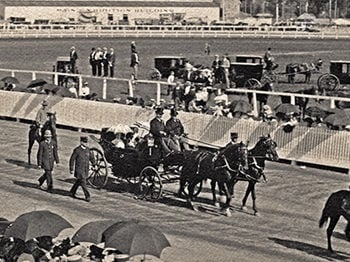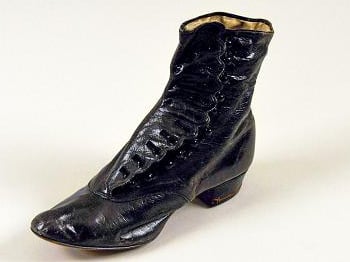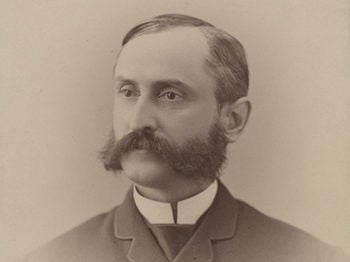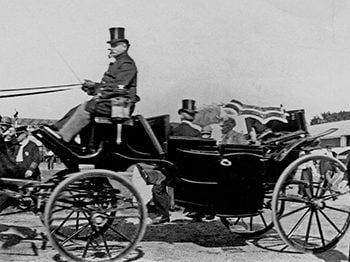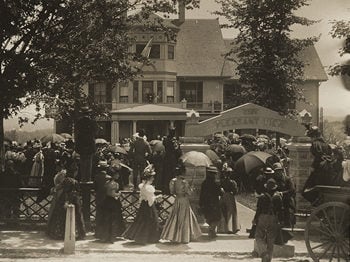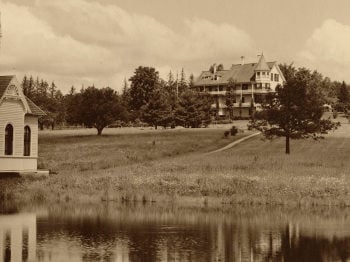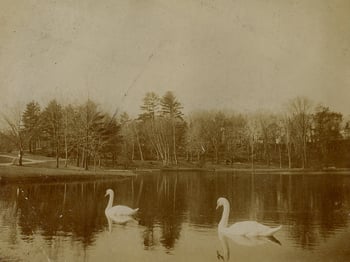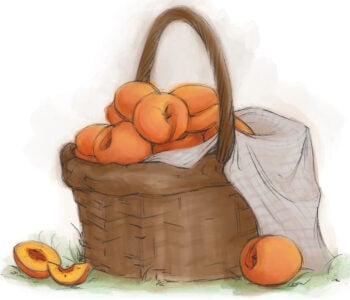Early one wintry morning in 1898, Mrs. Eddy called Calvin Frye to her and asked him to take down a statement which, with other wonderful ideas, had come to her during the night.1 She gave him no directions for its use. He was merely to preserve it. Some months later — in the summer — the head of a leading jewelry firm in Concord called upon Mrs. Eddy about making a souvenir spoon for Christian Scientists. She saw in such a project another way of helping her city and was immediately interested. He showed her a tentative design and she said that she had just what was needed for such a spoon. Calling Mr. Frye to her, she asked him to bring the statement she had given to him that wintry morning. For a moment he was panic stricken. He had no memory of what he had done with the slip of paper on which it was written. But he immediately realized that any message God had given to Mrs. Eddy could not be lost through him. Within a few moments he returned with it.
Mrs. Eddy approved the jeweler’s suggestion and authorized it for final design, utilizing on the handle the statement that had come to her months earlier. The spoon was cast and finished by William B. Durgin and Son, one of the largest and best manufacturers of silver in New England at the time. The dies, made by this factory, were of such superior workmanship that they could be used some fifty years later, when, for a brief time, the spoons were reproduced again. In Mrs. Eddy’s time, the J.C. Derby Company, 22 and 24 Warren Street, Concord, sold the spoons under the name of the Christian Science Souvenir Company. Profits for all sales went to the manufacturer and distributor. In 1899, at about the same time, Mrs. Eddy gave the Derby Company permission to use the emblem of the “Cross and Crown” on various types of pins and pendants.
The spoon was made in two sizes, a teaspoon size, and a small replica in the after-dinner coffee size. The first spoon cast from an ingot of 22-carat gold was presented to Mrs. Eddy by the jeweler. Later she had a few additional ones cast in gold for special gifts. Those made for regular sales were of sterling silver or sterling silver washed with gold. Examples of these various types are exhibited in the Mary Baker Eddy Museum, Longyear Foundation.
A description of the spoon appears in the January 1899 Christian Science Journal, p. 739, in which the writer says it was a massive piece of work, singularly rich and suggestive in design. A life-like bas relief of Mrs. Eddy is the central feature of the design. In the bowl is a picture of Pleasant View in relief and on the handle below the relief of Mrs. Eddy is the rose, her favorite flower. On the back of the handle, the motto is reproduced in her handwriting in relief. Surmounting the handle is the emblem of the “Cross and Crown”.
The spoon was ready for distribution by Christmas, 1898. In the February 1899 Journal Mrs. Eddy also urged all Christian Scientists to purchase one and, when they could afford it, to get a dozen that all members of the family might read the motto at every meal and accept its simple truth. In time the sale of the spoon dwindled away and production gradually ceased.




